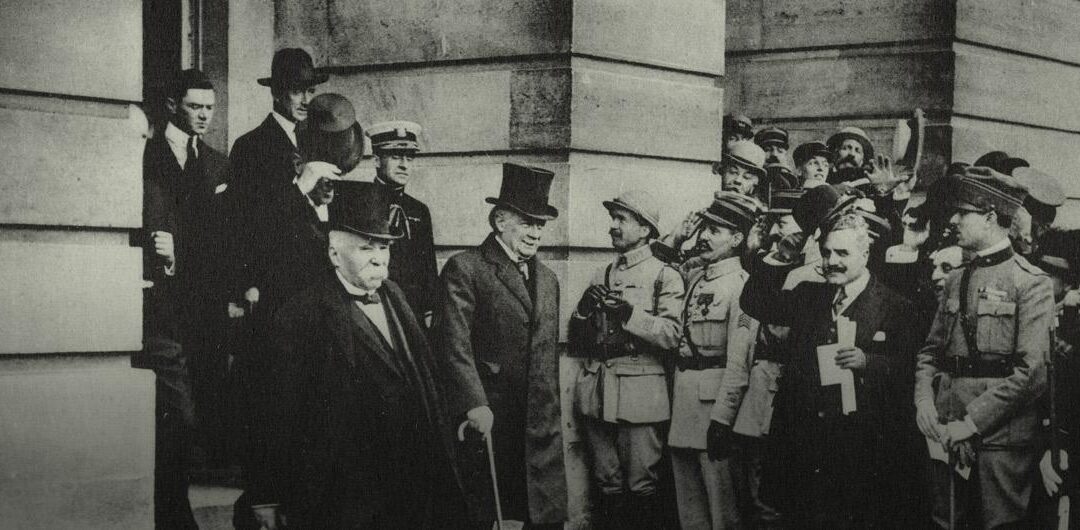At the Paris Peace Conference of 1919, Romania fought fiercely to have its rights recognized regarding the incorporation of the territories inhabited by Romanians from Austria-Hungary.
On August 17, 1916, the Romanian Prime Minister, Ionel Brătianu, signed with the representatives of the four powers of the Entente, the treaty by which Romania joined the Allies and entered the First World War. Brătianu negotiated between 1914 and 1916 the best conditions for the country’s entry into the war. Regarding the territories, Romania requested the provinces inhabited by Romanians from Austria-Hungary: Banat, Bukovina and Transylvania. The Entente agreed with these demands. In accordance to the military agreement signed with the Entente, Romania entered the war on August 28.
In spite of this treaty with the Entente, Romania’s position in Paris was from the start a difficult one, as several leaders of the Entente considered that the treaty with Romania had lost its validity as a result of the signing of the Treaty of Bucharest, although Romania had re-entered the war before the end of the conflict. In order to make the negotiations even more complicated for Romania, the US refused to acknowledge any agreement reached before their entry into the war, including Romania’s 1916 treaty.
Brătianu’s struggle in Paris
The intransigence with which Brătianu pursued these goals would soon bring him in conflict with the representatives of the Great Powers and, in particular, with Clemenceau. “We have inherited an independent country, and even to extend its borders, we cannot sacrifice its independence”, wrote Brătianu from Paris to a good friend.
Brătianu fought incessantly against the minorities treaty, which accompanied the one with Austria. Brătianu considered that this treaty limited the sovereignty of Romania and committed himself to a policy of resistance to the four Great Powers (Great Britain, France, USA and Italy). In addition to this treaty, there was also the issue of Banat, which the Great Powers wanted to divide between Romania and Serbia. Brătianu rejected this division on the basis of the treaty signed with the Entente in 1916. On September 12, Brătianu resigned from the Romanian government, and the Supreme Interallied Council summoned the new government led by Alexandru Vaida-Voevod to return to the negotiating table.
Vaida-Voevod succeeds in obtaining some reformulations of the diplomatic texts that were problematic for Romania, but cedes during the negotiations the southern part of the Banat to Serbia.
With a small exception, Romania succeeds in achieving its goals at the Peace Conference
Except for the southern part of Banat, Romania obtained at the Paris Peace Conference the territories that the Allies promised in 1916. Thus, on December 10, 1919, Romania signed the Treaty with Austria at Saint Germain-en-Laye, by which the union of Bukovina with Romania was recognized. The same day, the Treaty of Neuilly-sur-Seine was signed with Bulgaria, which reaffirmed the Romanian-Bulgarian border of 1913. On June 4, 1920, the Treaty of Trianon was signed with Hungary, which marked the union of Transylvania with Romania. The Treaty of Paris was signed on October 28, 1920, by which France, the United Kingdom, Italy and Japan recognized the union of Bessarabia with Romania.
The diplomatic recognition of the union of these provinces with Romania show two fundamental facts:
1. Greater Romania was not an artificial creation of the peace treaties of 1919-1920, as repeated in the interwar period by the Hungarian and Soviet revisionist propaganda;
2. The achievement of Romanian national unity was accomplished before the Peace Conference through the unification acts in Chișinău (Bessarabia), Cernăuți (Bukovina) and Alba Iulia (Transylvania), all in 1918. The Paris Peace Treaties only gave them international recognition.
Bibliography:
Glenn E. Torrey, România în Primul Război Mondial [Romania in the First World War], Meteor Publishing House, Bucharest, 2014.
I.G. Duca, Memorii [Memoirs], vol. I, Expres Publishing House, Bucharest, 1992.
The Count of Saint-Aulaire, Însemnările unui diplomat de altădată: În România: 1916-1920 [The testimonies of a former diplomat: In Romania: 1916-1920], Humanitas Publishing House, Bucharest, 2016.
Constantin Argetoianu, Memorii [Memoirs], Humanitas, Bucharest, 1992.
Florin Constantiniu, O istorie sinceră a poporului român [A sincere history of the Romanian people], Encyclopaedic Universe Publishing House, Bucharest, 2008.
Translated by Laurențiu Dumitru Dologa

